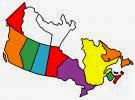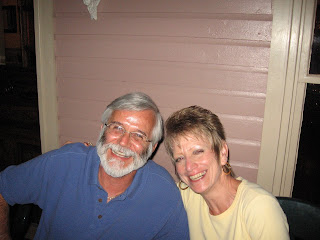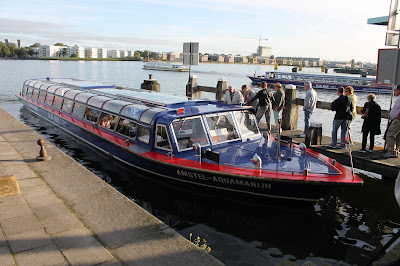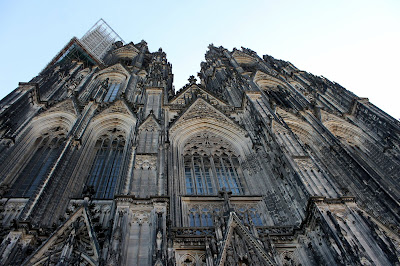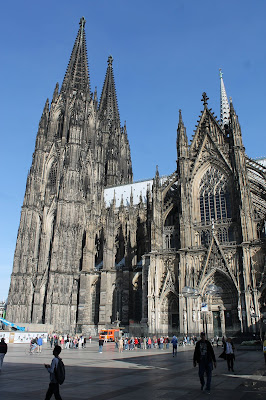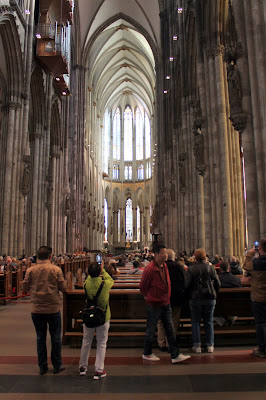When we awoke we had still not reached the dock on the Amstel River in Amsterdam, our last stop. Once the boat docked we had the entire day to explore the city as we would be spending the night on the boat. We previously visited Amsterdam in 1985 and were looking forward to seeing how it had changed.
The dock was very near the central train station where transportation was available to about anyplace in the city.
Our tour that morning was aboard a canal cruise boat that could navigate through the narrow canals and under the many low bridges.
The Emerald Sun was being refueled when we started the tour on the river.
Amsterdam is known as the Venice of the North with its 60 plus miles of canals. These canals divide the city into 90 islands.
One of the 1,500 bridges. I thought Pittsburgh was the city of bridges!
Many of the canals are lined with houseboats. Some of them are permanently in place and built on poles. Others look quite modern while some are in disrepair.
One of the most visited places is the Anne Frank House (center). Young Anne and her Jewish family hid in a secret annex from July 1942 until August 1944 when they were arrested by the Gestapo. Anne and her family where placed in a concentration camp where they died. Her father Otto survived and found her diary when he returned and had it published in 1947. The book has been translated into 60 languages. We did not tour the house.
Westerkerk - West Church - is one of the city's outstanding examples of Renaissance architecture. Anne Frank mentioned the sound of the church bells in her diary.
This picture says it all about Amsterdam: canals, bridges, bikes, trees and beautiful houses.
Most of the buildings lean forward a bit and have a hook at the top. The hook is used to lift furniture into the upper floors, so the lean keeps the things from hitting the building.
Just like streets in cities, some canals are wide major thoroughfares while others are like small back alleys.
Beautiful buildings on the canal. In Amsterdam, buildings were taxed by their width, so some had narrow fronts and were wider in the back. One thing that makes the city so beautiful is that almost all the buildings are only three or four stories tall.
Every canal (street) is different. On this one, the buildings on the left have a narrow pedestrian and bicycle way while the ones on the right go right down to the water. Originally, the buildings would have been warehouses where boats could unload their goods directly from the canal.
One of the more interesting buildings is the NEMO Science Museum that was built in 1997. The ship like building sure is appropriate for this city with boats and ships of every size on the river and canals.
After the boat tour we had the rest of the day to check out the city on our own. Some people did museums, some just relaxed on board after a busy week and a few of us did a walking tour for an up close look of the beautiful city.
Yes, you can get anything cannabis in the city. Sometimes you just need to be standing in the right place and breathe. A couple people bought some cannabis candy and, after realizing they could not bring it into the states, shared it with us.
We strolled along the Nieuwendijk, a narrow street with all kinds of shops, many of which you could find in any American city. Almost all the signs in the stores were in English. This is the Herni Willig cheese store.
Not only can you buy cheese, they show you how they make it. Nothing like being able to buy cheese from a store that dates all the way back to 1974:)
The Royal Palace in Damplein Square was built in the 1600's as the Town Hall. It is one of three palaces that is available to the royal family of Netherlands.
The National Monument was dedicated in 1956 to honor those who died in WWII and other wars. A Remembrance of the Dead is held here each May 4th.
There once was a lady who lived in a shoe, wooden you like to live there too?
The city has over 7,000 classic buildings, many dating back to the 16th to 18th centuries. Their wealth came from the merchant class that brought products from around the world to Europe.
This looks like a job I did years ago. Many of the buildings have shifted because they are built on wooden pilings that are rotting away.
It is really hard to take a bad picture as everywhere you look it is picturesque with the buildings and church towers.
Rick, Denise, Mary, Ken, Nanc, Anne Marie and Gail. As you can see by the sign we were in "the district," that narrow alley where you can see working ladies.
Like I said, most of the signs are written in English including this no pee warning.
This is one thing that hasn't changed. While you can be fined for peeing on the street, you can step into these on street loos and relieve yourself. I failed to get a picture so I used this one from our 1985 visit.
There are many different kinds of tour boats in the city including ones that are floating bars. Most of the restaurants and bars have outdoor seating.
Probably the number one means of transportation in Amsterdam is by bicycle. There are so many they have there own totally separate road and traffic signal system. You learn quickly you may get run over if you encroach on their roads.
Many people dock their small pleasure boats on the canal in front of their homes. Of course if you use the canals, your boat can't be very high.
There were all kinds of ships and boats on the Amstel River. There were ferry boats, water taxis, river barges, big ocean going ships and even what looks like could be a pirate ship.
I would say that overall the city has changed very little since our last visit. I guess when you realize you live in such a beautiful place you should leave well enough alone. We had a fun time with everyone from WashPA on the cruise: left to right (seated) Nanc, Becky, Gail, Anne Marie and Sharon; (standing) Bobbie Jo, Dick, John, Jim, Ron, Tim, Ken, Mary, Tim and Denise.
This was our first experience touring on a river cruise and we all agreed it is a wonderful way to go. Unlike a coach tour, once you are on board there is no packing and unpacking as you travel. The service on board was excellent, the food was excellent and the tours were all first class. While river cruises are more expensive than ocean cruises, when you consider all that is included, it is well worth it. There sure are other cruises we would be interested in taking.
